The WhiteWidow
Posted: 18 Mar 2011, 20:20
Sanding Down the Case
This has been only hit with 600 wet for a few seconds. This is still the coating on the case; which will hold onto the finger prints almost as bad as the stock coating.

Time to remove the coating... the light color is the plastic under the coating.

Coating all gone (with 600 grit). Note that at this point if you were to polish the plastic back smooth you would be left with a smoky clear plastic... this might be cool to play around with; there are also 100+ LED connections on the board if you wanted to play with some back lighting under the clear case/frame.
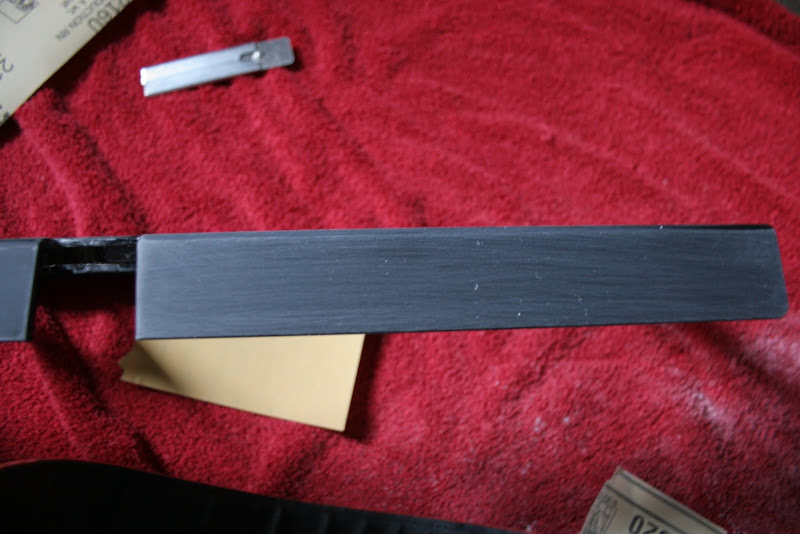
Pulling Switches
I found that using the desoldering bulb is the easiest way to remove the solder from the switch. I did find that the solder used by the factory was most likely lead-free and therefore a little harder to heat up and remove. What i did was take a quick run at all of them, probably only fully clearing about 30% of them; then i when back over each one that was still soldered and applied some new solder to it (64/40) and then let it site for a quick count to 5. After this it was good enough to use the bulb again to remove the rest. After the 2nd pass with this i had about 90% of the switches clear and free of solder. The rest just required one more pass. If you have some of the other guides they talk about being able to wiggle the switch from the top and you should be able to see all pins move freely. If when you wiggle the switch the pins to not move then do NOT try to remove the switch, this can damage the board, switch or both. I was able to do mine without any damage. Once the solder is all removed then you will just need to "pop" out the switches, I used a screwdriver the same size as the peg in the switch; I would just line it up and with one or two quick knocks it would break free.
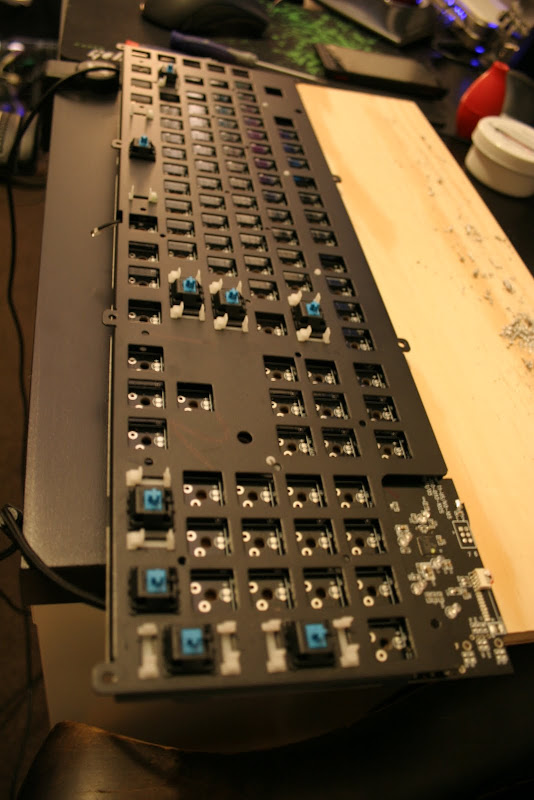

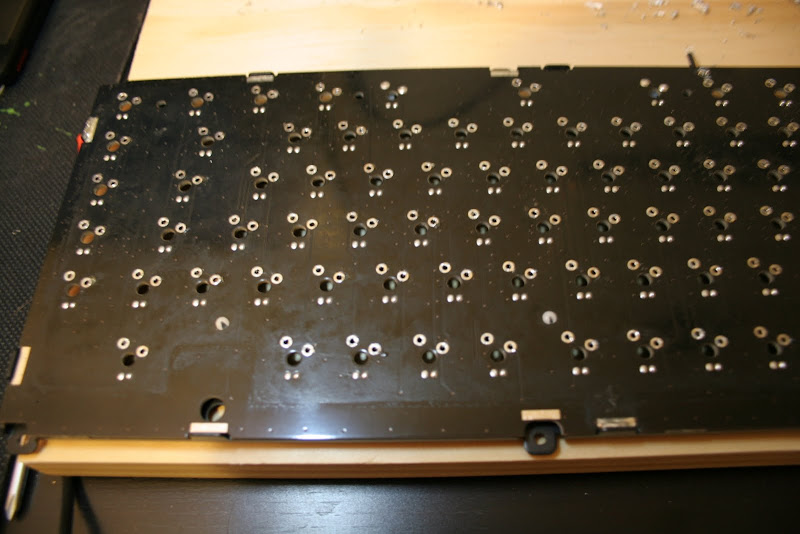
Installing MX whites/clears
Before I could install the switches I needed to swap the tops of the blue and clears switches; the clears are board mounted and the blues are plate so it took almost 3 hours to pull apart all the switches blue and clear and then rebuild the clears on the blue bottoms. There is no real trick to this that I know of... I just used a small flat head screwdriver to pop the sides of the switches.

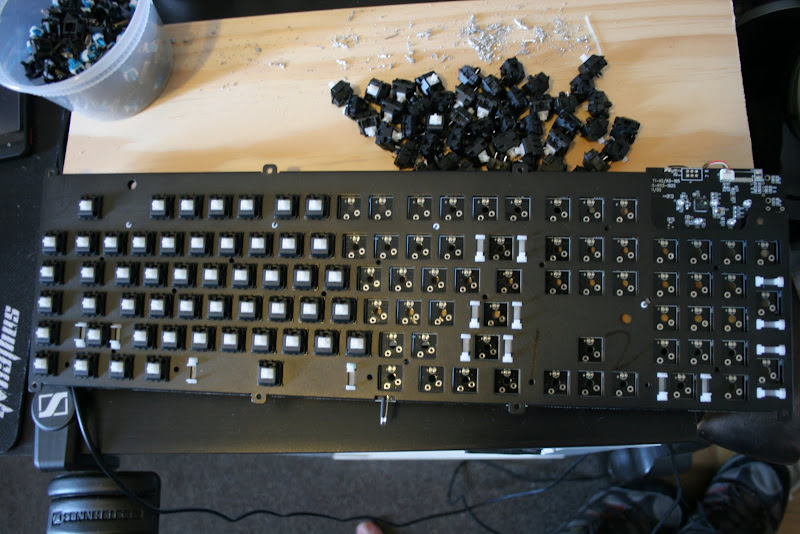


First Coat with problems in the finish
I used the Rustoleum Auto Gloss Paint from Lowes Hardware store. This finish is NOT hard enough of a finish to last on your keyboard, mine is currently in the auto body shop down the street getting a shot of clear on it. On this first coat you can see some trash in the paint. I started off with two thin coats and then i wet sanded the whole thing down for the 3rd and 4th coats. The first three coats where done in the first hour of the project but the final coat i waited for 3 days to fully cure and then wet sanded it with 600grit.

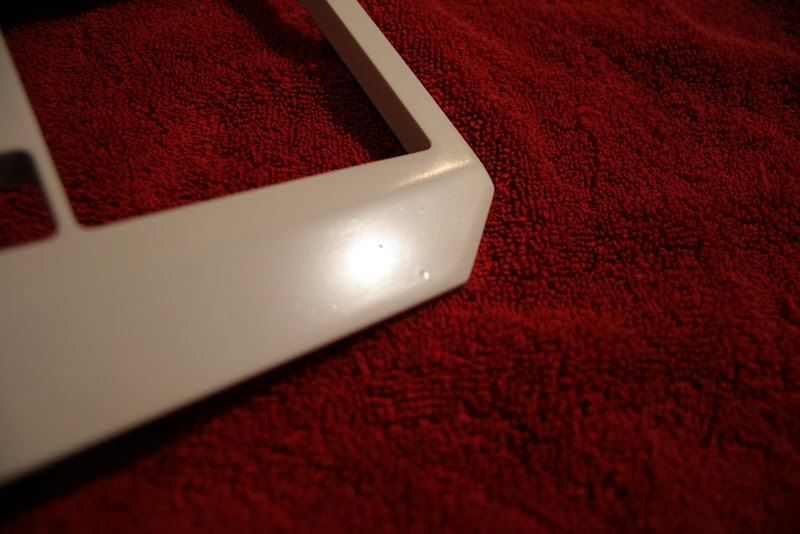
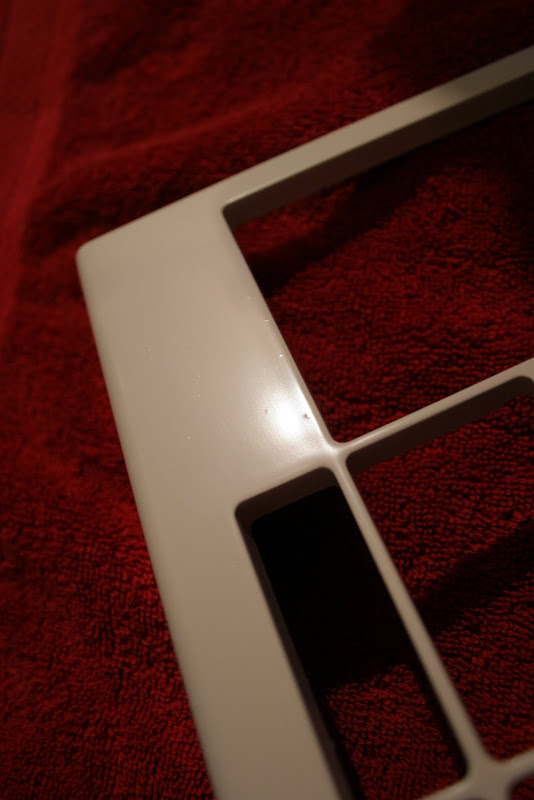


After Final Coat and no Keys

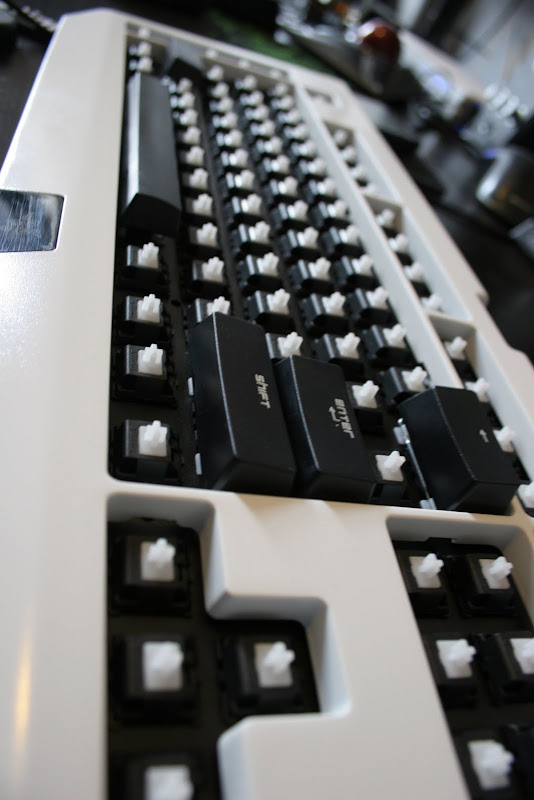

After a wetsand and a new coating of white + Keys
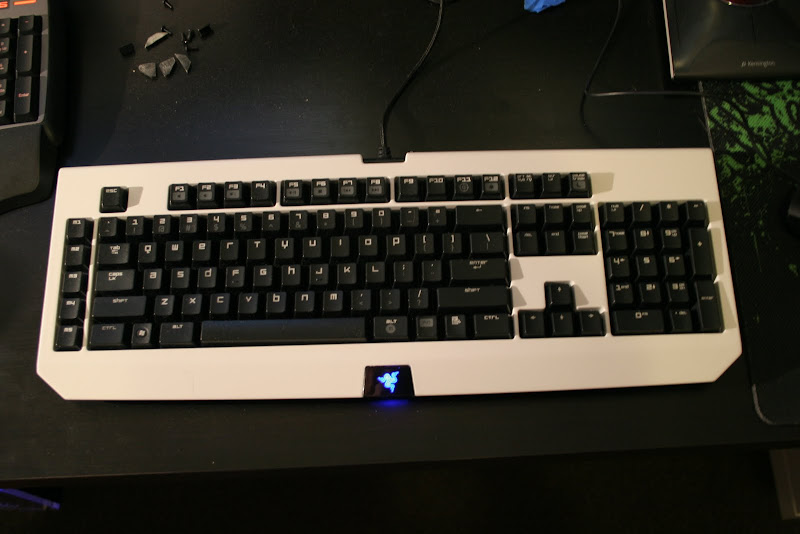

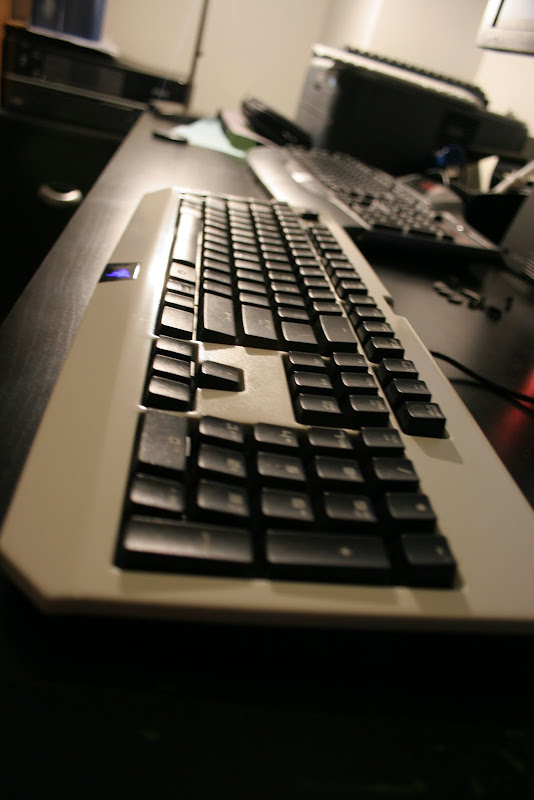

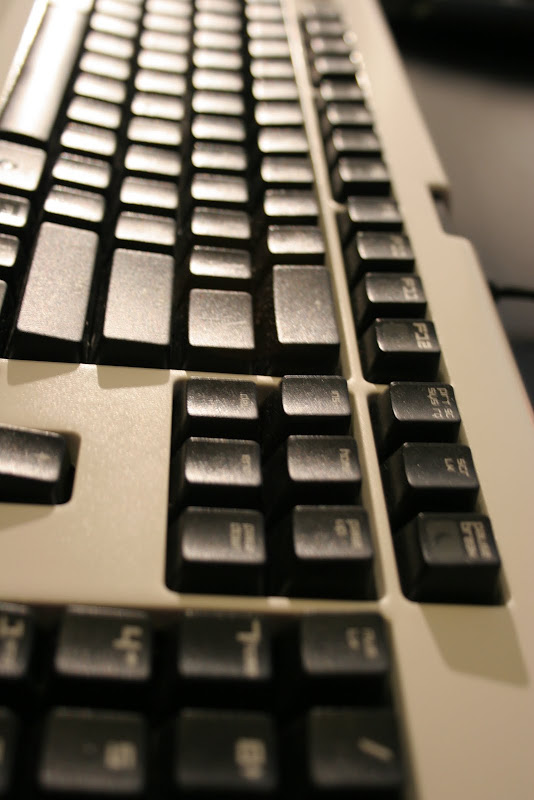
This has been only hit with 600 wet for a few seconds. This is still the coating on the case; which will hold onto the finger prints almost as bad as the stock coating.
Time to remove the coating... the light color is the plastic under the coating.
Coating all gone (with 600 grit). Note that at this point if you were to polish the plastic back smooth you would be left with a smoky clear plastic... this might be cool to play around with; there are also 100+ LED connections on the board if you wanted to play with some back lighting under the clear case/frame.
Pulling Switches
I found that using the desoldering bulb is the easiest way to remove the solder from the switch. I did find that the solder used by the factory was most likely lead-free and therefore a little harder to heat up and remove. What i did was take a quick run at all of them, probably only fully clearing about 30% of them; then i when back over each one that was still soldered and applied some new solder to it (64/40) and then let it site for a quick count to 5. After this it was good enough to use the bulb again to remove the rest. After the 2nd pass with this i had about 90% of the switches clear and free of solder. The rest just required one more pass. If you have some of the other guides they talk about being able to wiggle the switch from the top and you should be able to see all pins move freely. If when you wiggle the switch the pins to not move then do NOT try to remove the switch, this can damage the board, switch or both. I was able to do mine without any damage. Once the solder is all removed then you will just need to "pop" out the switches, I used a screwdriver the same size as the peg in the switch; I would just line it up and with one or two quick knocks it would break free.
Installing MX whites/clears
Before I could install the switches I needed to swap the tops of the blue and clears switches; the clears are board mounted and the blues are plate so it took almost 3 hours to pull apart all the switches blue and clear and then rebuild the clears on the blue bottoms. There is no real trick to this that I know of... I just used a small flat head screwdriver to pop the sides of the switches.
First Coat with problems in the finish
I used the Rustoleum Auto Gloss Paint from Lowes Hardware store. This finish is NOT hard enough of a finish to last on your keyboard, mine is currently in the auto body shop down the street getting a shot of clear on it. On this first coat you can see some trash in the paint. I started off with two thin coats and then i wet sanded the whole thing down for the 3rd and 4th coats. The first three coats where done in the first hour of the project but the final coat i waited for 3 days to fully cure and then wet sanded it with 600grit.
After Final Coat and no Keys
After a wetsand and a new coating of white + Keys